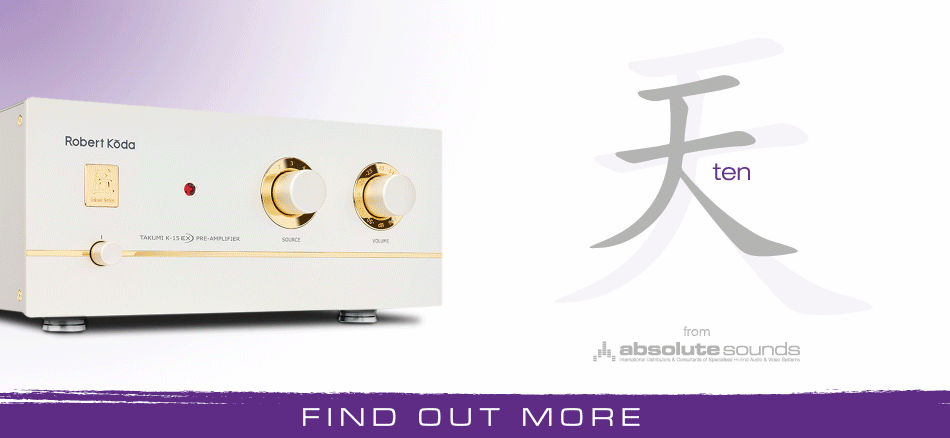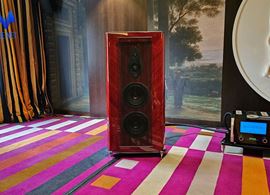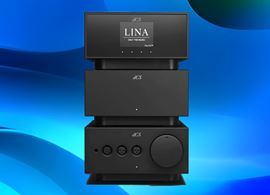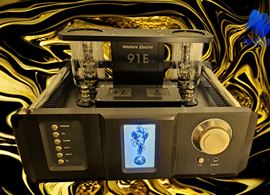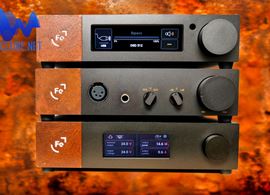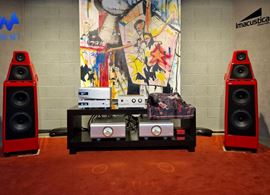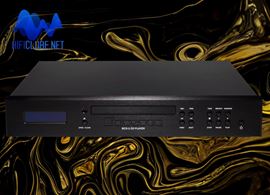
TO BE OR NOT TO BE
Class D is not even truly digital. The audio signal is not converted to binary data, although they do act digitally, as the output transistors are either fully ON or OFF. The switching is modulated by the signal amplitude which varies the pulses (PWM) of a fixed high frequency used as the carrier for the audio signal. Actually it becomes a little more complicated: the signal amplitude has to be compared to a reference triangle waveform at the intended switching frequency. The higher this frequency is, the higher the resolution.
Class D amplifiers do have the advantage of high efficiency reaching as high as 90%. But they also have trouble coping with the integration of the pulse duty cycle while at the same time eliminating the switching carrier frequency.
Nagra states they have nothing against Class D. At the same time Nagra guarantees the PMA is not a Class D amplifier at all but rather a Class A/B amplifier, and since I was not given permission to do any archaeology research inside the pyramids, I shall not dwell on this topic longer than is strictly necessary. I hereby take their word for granted: the Pyramid hides a Class A/B amplifier.
But is there in the secret tomb at least a mummy of a switch-mode power supply to control the on/off cycle of the switching transistors also by means of Pulse Width Modulation, thus saving power to comply with the strict EU regulations? Nope, says Nagra. Switch-power supplies generate considerable noise, so they don't use them either. They use instead a Power Factor Corrector as they did with the MPA, only this time in a more sophisticated patent pending way. I think it's some kind of a forward converter with a tertiary winding and a diode connection to permit reverse current thus avoiding saturation of the transformer core (which does not preclude the use of a switch mode to control the ON/OFF switching). Technically inclined readers can learn more about DC-to-DC converters here.

POWER FACTOR CORRECTOR
A Power Factor Corrector stores energy every cycle in an inductor. If there is a sudden demand for current, the power-factor corrector provides the energy it has stored by changing the instantaneous current demand into a decent sinusoidal form, thus supplying a much smoother and ripple free voltage. The least the power-supply ripple, the better the sound of the amplifier. Even monsieur Jacques de La Palice, «qui un quart d'heure avant sa mort, était encore en vie», would have found this as obvious in his own time. By not generating spikes (ergo, musically unrelated evil harmonics), it also concomitantly avoids electrical pollution of other components in the system. Ripple control means less need for filtering. The PMA uses only two 10 000 uF capacitors, one for the +65V rail and other for -65V rail despite the declared 200W of power into 8 Ohm.
Hélas, in real life things are never as obvious or as easy. If the musical signal suddenly demands high current to feed its needs, the capacitors will try to quench their thirst by sucking power from the wall socket. But what if the amplifier is directly connected to some kind of ripple smoother device? Won't it slow down the current transients?…
Nagra has allegedly found a way around this. Allow me to respectfully interpret the designer Jean-Claude Schlup own words as printed in the brochure (all reviewers quote, although they don't admit it):
The Power Factor Correction System is connected directly to the incoming mains supply accepting voltages from 90V to 264V. The PFC is followed by a DC-to-DC converter, which lowers the PFC's voltages to those required by the amplifier (more or less 70V). This method usually requires an intermediate DC voltage of 400V before being reduced by the output converter. This is the classic implementation and it requires quite a lot of heat dissipation. Nagra uses an input transformer which both lowers the input voltage close to the required operating voltage and automatically adapts to the incoming 110/220V. By not having to handle the high 400V supply it can operate without the need for any heat dissipation whatsoever. Well, the main chassis wings constitute a hell of a lot of dissipation surface area nevertheless. I gather they are intended to allow for the cooling of the output transistors. The «wings» get lukewarm even if the amplifier is left on idle which might account for the alleged high biasing in Class A (in auto mode it automatically switches off/on upon detection of the musical signal in the inputs).
The patent pending negative voltage PFC generates low voltages and is isolated from the mains by the transformer allowing servicing and measurements while operating without risks of short circuit or electrical shock. This is most considerate of Nagra, since reviewers keep poking their long Pinochio noses inside amplifiers. Not me on both counts, cross my heart…
The amplifier power stage uses EC-20 N/P/20 MOSFETs from Exicom which Nagra found to have the best compromise. It eliminates the need for paralleling while still reducing the risk of HF oscillation.
Go to Part Two (see Artigos Relacionados below)

